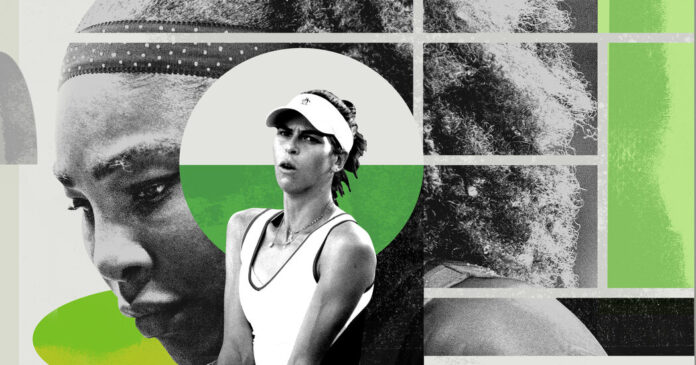Within the sixth episode of the Netflix docuseries “Break Level,” Ajla Tomljanovic, a journeywoman tennis participant who has spent a lot of the final decade within the Prime 100 of the world rankings, is proven splayed throughout an train mat in a colorless coaching room after reaching the 2022 Wimbledon quarterfinals. Her father, Ratko, stretches out her hamstrings. She receives a congratulatory cellphone name from her sister and one other from her idol-turned-mentor, the 18-time main champion Chris Evert, earlier than Ratko declares that it’s time for the dreaded ice bathtub. “By the best way,” Tomljanovic says at one level, “do now we have a room?” Shortly after his daughter sealed her spot within the remaining eight of the world’s pre-eminent tennis event, Ratko was seen on reserving.com, extending their keep in London.
This isn’t the stuff of your typical sports activities documentary, however it’s the lifetime of an expert tennis participant. Circumnavigating the globe for a lot of the yr with solely a small circle of coaches, physiotherapists and maybe a guardian, they shoulder alone the bureaucratic irritations that, in different elite sports activities, may be outsourced to brokers and managers. If at some tournaments they shock even themselves by outlasting their resort lodging, most occasions will solely harden them to the usual torments of the circuit, which reminds them weekly of their place within the pecking order. As Taylor Fritz, now the top-ranked American males’s participant, remarks in a single “Break Level” episode, “It’s powerful to be completely happy in tennis, as a result of each single week everybody loses however one individual.” It is a sobering audit, coming from a participant who wins significantly greater than his roughly 2,000 friends on the tour.
“Break Level,” executive-produced by Paul Martin and the Oscar-winning filmmaker James Homosexual-Rees, arrived this yr as a present to tennis followers, for whom splashy, well-produced and readily accessible documentaries in regards to the sport have been onerous to return by. Tennis, as we speak, finds itself within the crepuscular mild of an period when a minimum of 5 completely different gamers — the Williams sisters, Roger Federer, Rafael Nadal and Novak Djokovic — have absolutely deserved mini-series of their very own. However the sport has by no means loved its personal “All or Nothing,” the all-access Amazon program that follows a unique skilled sports activities group every season, or the event-television standing accorded to “The Final Dance,” the Netflix docuseries about Michael Jordan’s Chicago Bulls, with its luxurious suite of speaking heads: Nas, Isiah Thomas, “former Chicago resident” Barack Obama. Maybe it is because the narrative tropes of the style have a tendency towards triumphs and Gatorade showers, whereas the procedural and psychological realities {of professional} tennis lie elsewhere. The ten episodes of “Break Level” render tennis unromantically: That is the uncommon sports activities doc whose main topic is loss.
In Andre Agassi’s memorably frank memoir, “Open,” he describes the tennis calendar with refined poetry, detailing “how we begin the yr on the opposite aspect of the world, on the Australian Open, after which simply chase the solar.” This itinerary roughly dictates the construction of “Break Level,” which opens on the yr’s first Grand Slam and closes on the year-end championships in November. At every event, the gamers it spotlights submit spectacular outcomes — after which, sometimes, they lose, thwarted generally by the game’s cussed luminaries however extra typically by bouts of nerves or exhaustion. They discover consolation the place they will, juggling a soccer ball or mendacity again with a self-made R.&B. observe in a resort room. However many tears are shed, after which they redouble their commitments to work more durable, be smarter, get hungrier. “It’s a must to be chilly to construct a champion mind-set,” says the Greek participant Stefanos Tsitsipas.
